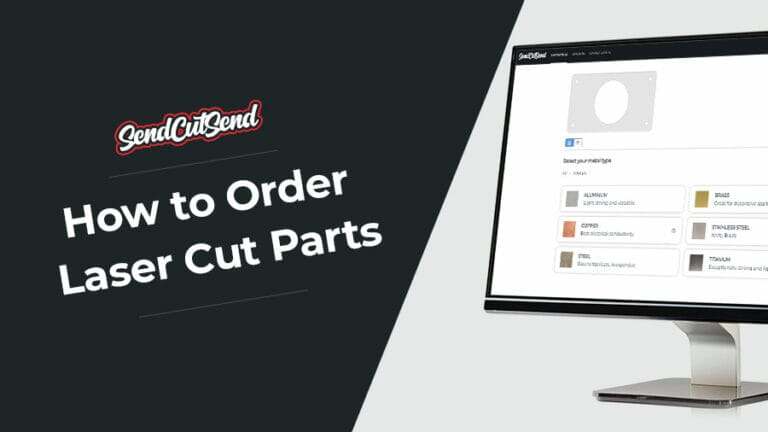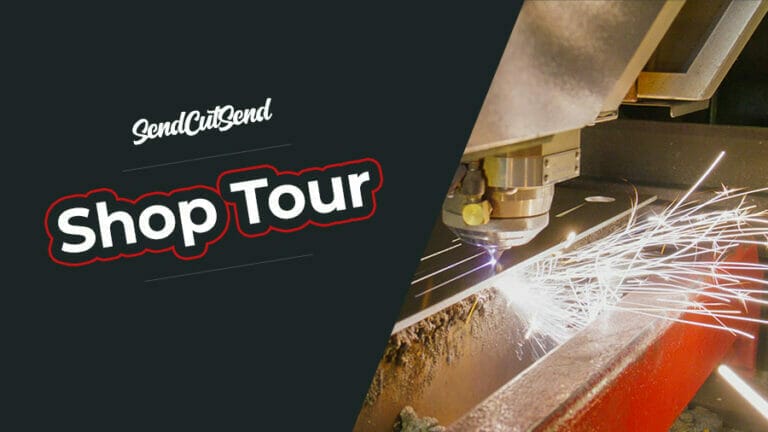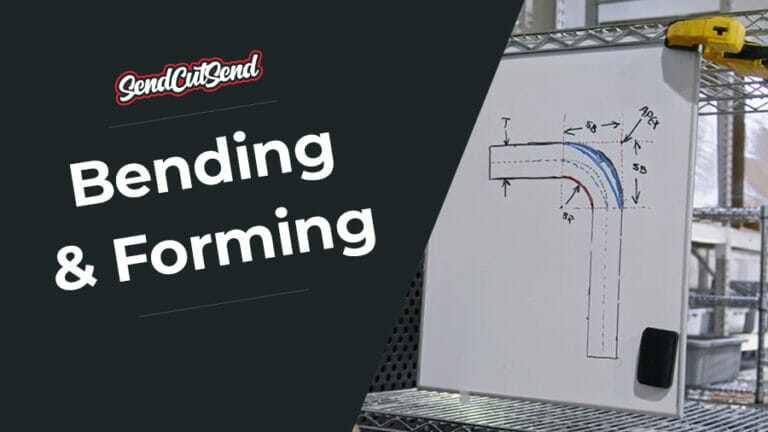Designing simple locating features can significantly streamline the process of assembling laser-cut parts for welding, saving both time and money. By incorporating these features, you can ensure precise alignment and reduce the need for costly fixturing tools. This article will provide valuable insights into:
- The benefits of using locating features in weldments
- How to design effective locating features for precise assembly
- An example showcasing a practical application of these features
Weldment Example: Adapter Mount
An example of a simple weldment is the pump adapter mount shown below. The mount consists of five two-dimensional laser-cut parts made from 3/8” mild steel:
(1) Top mounting plate – Bolts to the bottom of the pump.
(1) Bottom mounting plate – Bolts to the primary mounting location.
(2) Uprights – Lift the pump to the desired position.
(1) Crossmember – Provides additional lateral (side-to-side) stiffness during assembly.

The primary intent of this weldment is to elevate a pump by 4.59 inches. The weldment must also ensure that the side-to-side and fore-and-aft positions of the mounting holes are correctly located relative to each other. These constraints can be very challenging for any hobbyist or skilled fabricator without a plethora of expensive fixturing tools.
How to Design Locating Features for Weldment
Locating features help position one part relative to another. A common example is a dowel pin (a round rod that fits tightly into a round hole). However, locating features do not need to be round. When working with plates, it is common to design rectangular locating features because of the cross section of the plate.
At first glance, it may not be obvious that each piece within the image above has locating features. However, an exploded view makes it easier to see the tabs and slots in the different parts. The combination of tabs and slots makes it easy to assemble the weldment before welding everything together.

It is important that each tab fits snugly into each slot so that when the weldment is assembled, there is minimal movement between the parts. Additionally, depending on the part, it may be important to ensure that the tab does not extend all the way through the slot. In the case of this pump mount, if the tab were to extend past the slot, it would change the overall dimension of the weldment, which would be unacceptable.
The tabs and slots in the part follow a simple recipe. The width of the slot is determined by the thickness of the plate used. In this case, the part was made from 3/8” (0.375) plate, and the slot was matched to that dimension. Due to the accuracy of the laser cutting, it was not necessary to oversize the slot. The other dimension is ultimately up to the designer. In this case, the length of each slot was set to 3/4” (0.75). Lastly, the depth of each tab was set to 0.35 inches to ensure the tab would not extend through the 3/8” deep slot.

Assembling and Welding the Final Product
When done correctly, the final part can be easily assembled. In this case, the assembly time was under one minute and required no fixturing to stand on its own. The picture below shows the final assembly before welding. As the reader can see, the part is nearly ready for welding without any additional prep work. A simple 90-degree magnet was used to ensure the uprights were square, but no other fixturing was necessary.
Designing weldments with these simple locating features can save hours of fixturing time, ultimately leading to lower-cost parts, higher productivity, or simply more time to enjoy the results of a well-designed part.






